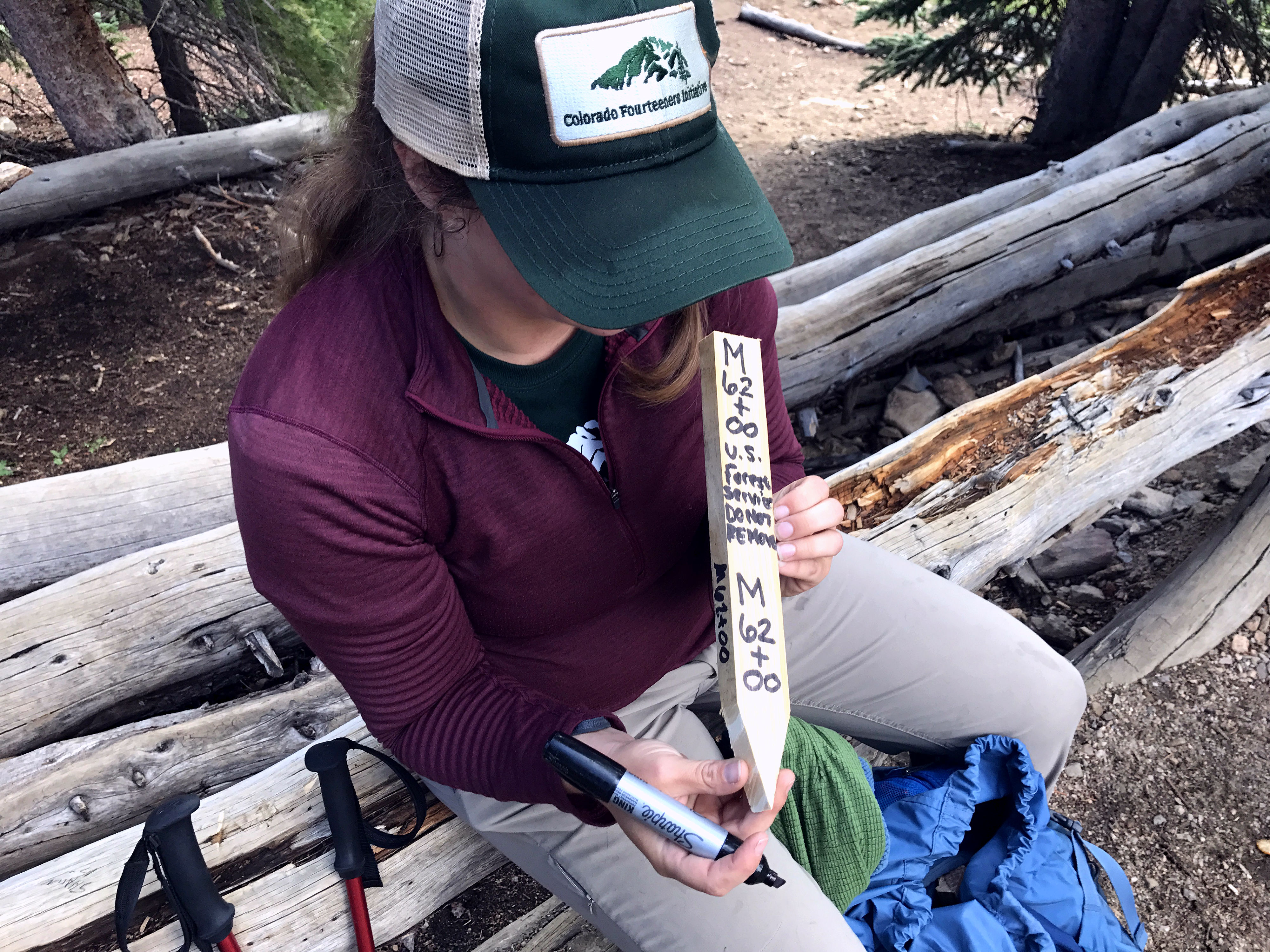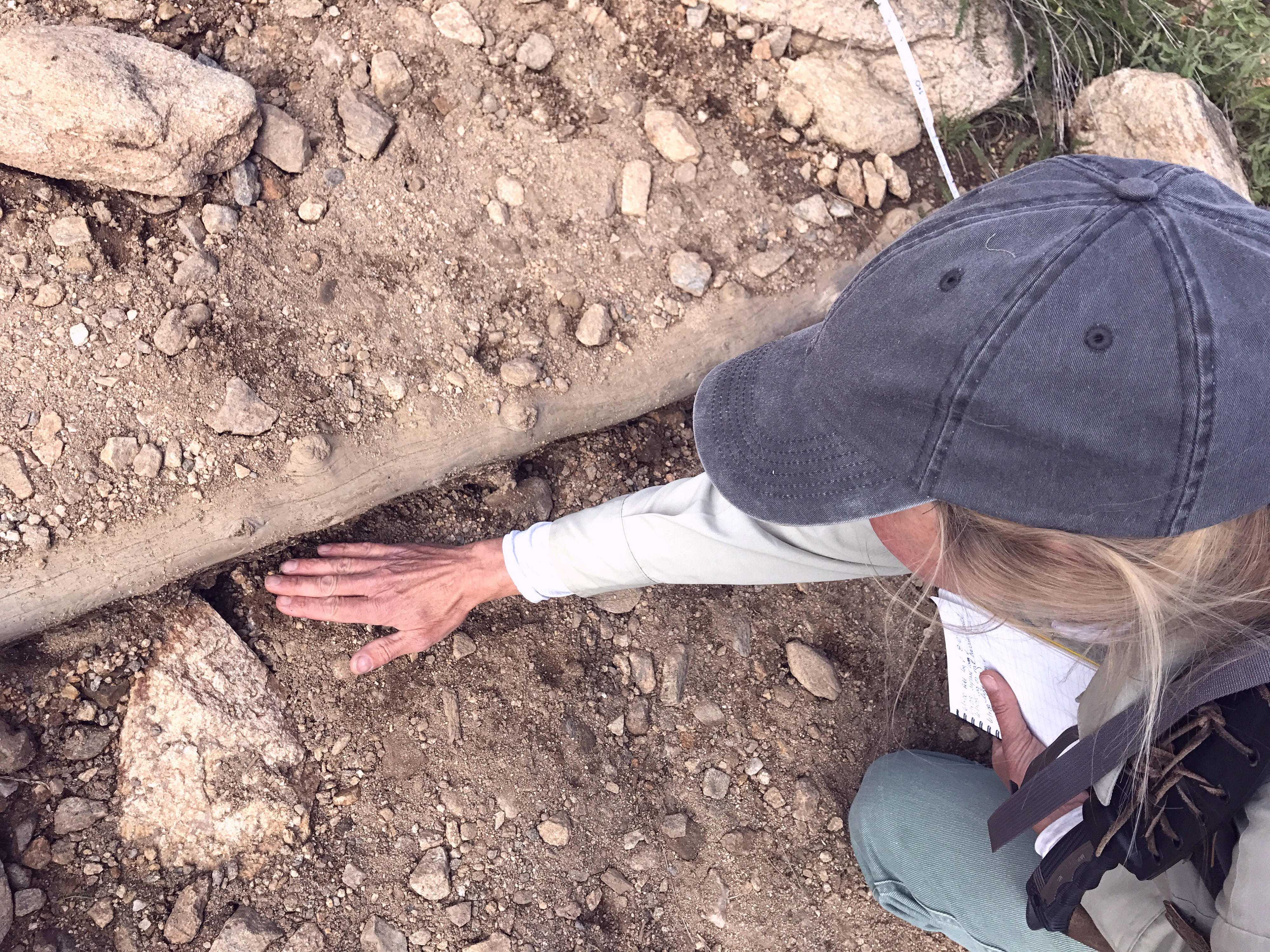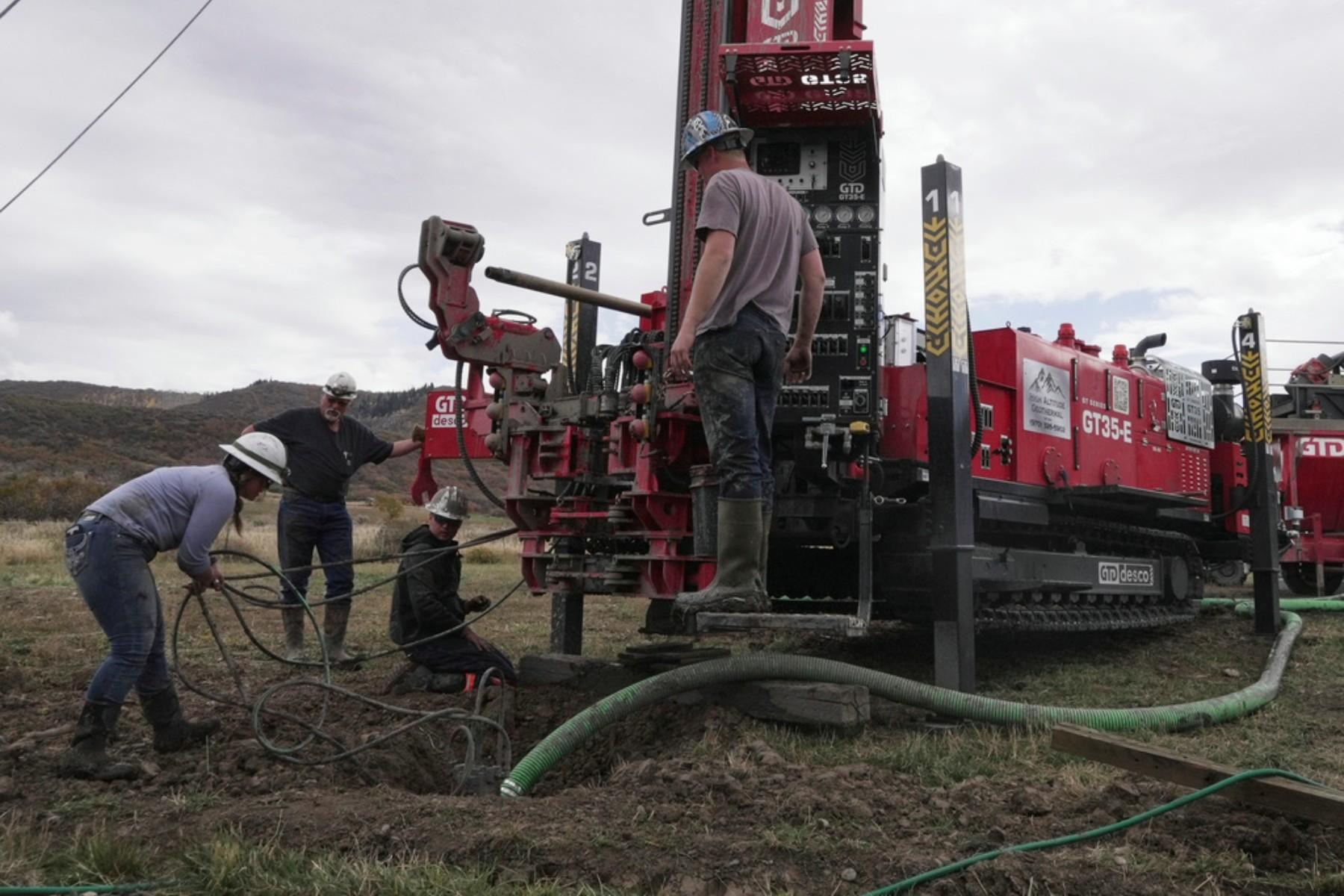
Loretta McEllhiney enjoys her commute to work during the summer.
"Wait till you see the views from my corner office," she tells me during a hike up Mt. Elbert.
McEllhiney, who manages the U.S. Forest Service's Colorado Fourteener Program, often gets up as early as 3 a.m. so she can reach the section of trail she's working on. On this particular day, it's at treeline -- about 12,000 feet above sea level. And she's right, the views are stunning from Colorado's tallest mountain.
Dana Young is a seasonal trail designer with the Colorado Fourtneers Initiative (CFI), a partnership of nonprofits dedicated to preserving the state's highest peaks. She often works alongside McEllhiney and says they'll stay at it until they "get chased off the mountain" by a storm.
They're doing maintenance work on section of the official North Mt. Elbert Trail -- on this hike, they mostly map out where repairs are needed, using wooden stakes to leave construction notes every 100 feet along the trail.

According to CFI, Mt. Elbert was the most-hiked trail last summer, with "an estimated 29,000 hiking use days" -- an increase from an estimated 25,000 hiking use days in 2015.
Trail design and maintenance is hard work. It's also expensive. CFI reports that it can cost about $500,000 to $750,000 to build a new 14er trail, depending on how complex it is, how long it takes to build and how many people are involved in the process. Then there's, of course, maintenance costs to keep up with the heavy use. Most of the money for this kind of work comes from donations and nonprofits such as CFI.

During our hike, she tells at least a dozen people to stay on the trail. Next to the official trail, is what McEllhiney calls a "socially created" one. There's a stretch of bare earth past treeline.
"People just don't realize that, especially in the alpine, five footprints can kill a plant," McEllhiney says.
Fundamentally, her job is to tell people to stay on the designated route -- not with words, but through clever design.
"I like to say that 90 percent of my job is psychology and 10 percent of my job is engineering," she says.

She designs barriers along the path, such as a small retaining wall made of logs: "So basically it's easier for somebody to step up or down on the existing checks. Than it is to step up and over that thing. It has to be that instanteous."
This north Mt. Elbert trail means a lot to McEllhiney because it was the first one she ever designed. Looking at it today, she finds fault in her earlier work, pointing to erosion from water flowing down the mountain. She says every day on that mountain is a learning experience.
"I look at things I did back in 1992 or 93 and I'm like, 'What was I thinking?'' she says. "But... I've learned from my mistakes."
At 54, McEllhiney says she doesn't push it as hard as she used to, but she's still fast. She certainly left me out of breath.
Related:
- Art In Thin Air: Denver's Lisa Martin Paints Landscapes At 14,000 Feet
- Colorado's 14ers Could Use A Little Love
- Hanging Lake: Here's The Forest Service's Draft Plan For Overcrowding Control
- Conundrum Hot Springs Has A Poop Problem, So You May Have To Bag Your Business
- 10 Great Hikes To Explore Colorado's Western Slope This Summer









